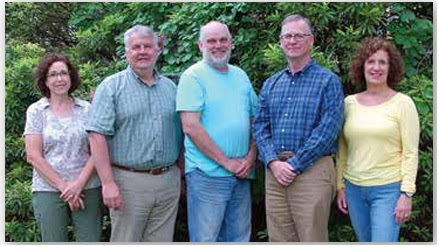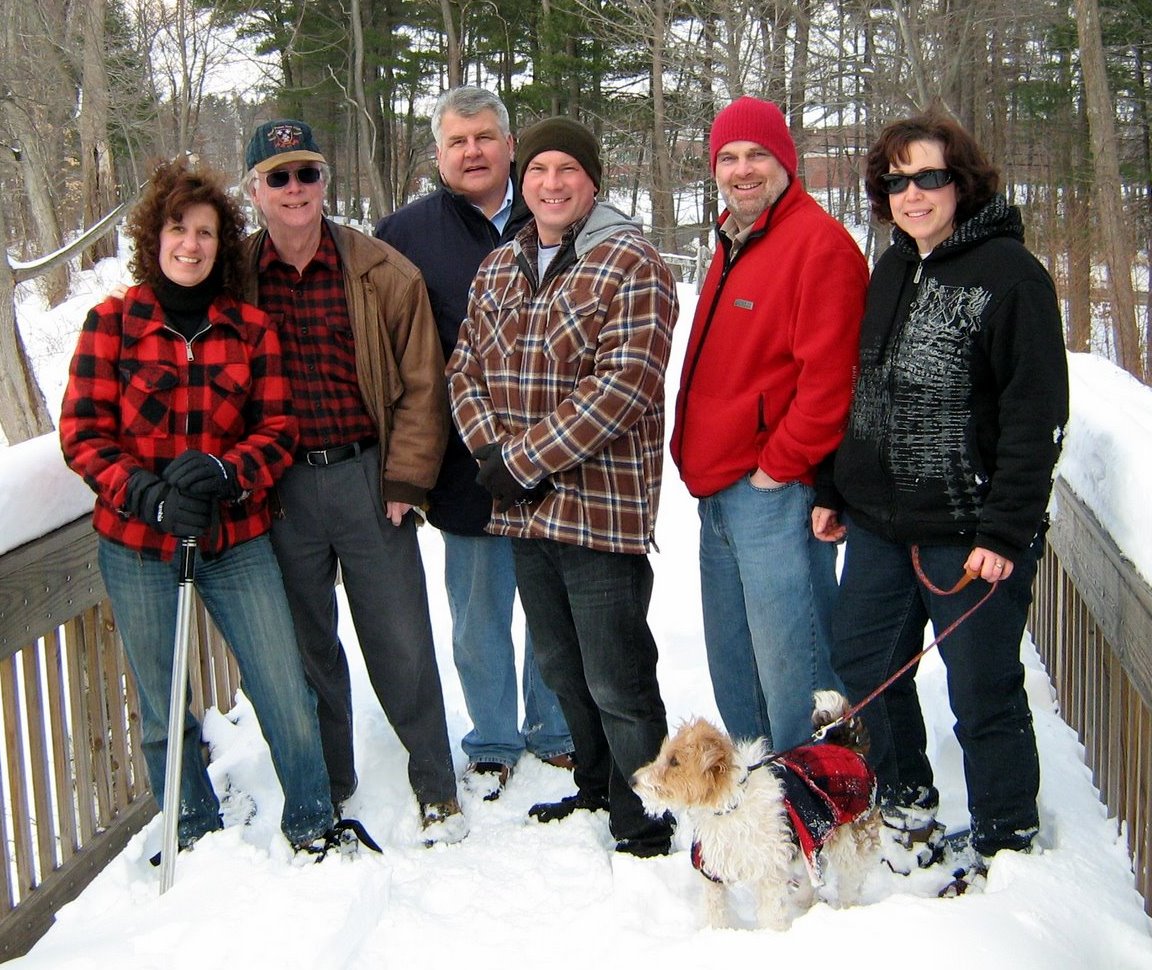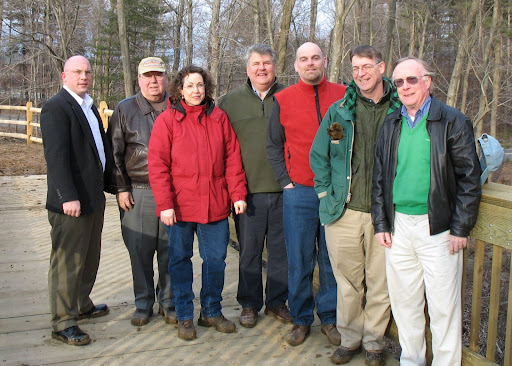I haven't made any comments to the media since my last posting. However while I generally agree with the CtPost Editorial of today, it does need clarifications for accuracy:
+++++++ CTPOST EDITORIAL 2006/Aug/31 - Building a legacy
My comments are in Red within the editorial
Shelton residents may gain the opportunity this fall of helping the city meet a goal of preserving as open space at least 15 percent of this rapidly growing community's remaining available land.
Shelton's Board of Aldermen is considering a proposal to place a referendum question on the November ballot that would allow voters to decide if the city should purchase the development rights to 140 acres of the 400-acre Jones Farm.
The BOA already took the action 2 days ago to have a referendum question to purchase development rights to apx. 130 acres
If the question goes on the ballot, it will offer a golden chance for Shelton, which has been a statewide leader in farmland preservation, to prevent development of another large tract of land located within its borders.
As said above, it will be on ballot. It is a wonderful opportunity that I hope the voters will support.
The property in question is the homestead portion of the popular Jones Farm, well known for its commercial growth of Christmas trees, berries and, in recent years, grapes for winemaking.
Under the proposal, the Jones family would continue to own and work the land, but the property could never be developed. The tract is suitable for a subdivision of 60 building lots, city officials said.
Commonly known as "Candy Cane Hill" where much of the Christmas activity takes place. These are the lands above the main yard area where the winery sales occur.
The Jones family has already sold development rights to two smaller portions of their property.
Similar rights to the 140-acre tract could cost Shelton an estimated $3 million to $4 million, which is why voters are required under the City Charter to act on the proposal.
In 1995 82 acres known as the Valley Farm area were preserved at no cost to Shelton. In 1998 92 acres known as Pumpkin Seed Hill were preserved at $300,000 cost to Shelton. Numerous other actions over the years have been taken by the Jones Family Farms toward preserving open space in Shelton and helping farms in the region. See my later comments below regarding this parcel's valuation and Shelton's share in it's preservation.
But having residents vote on bonding to finance the deal also directly involves them in a serious question that faces most Southwestern Connecticut municipalities: striking a balance between continuing development and the dwindling opportunities to preserve open space.
When a step toward balance of development with land preservation, especially working farmlands, is taken of this magnitude - it should and is required by charter to involve the citizens of Shelton. I have confidence they will see the merits of the facts and vote accordingly to preserve these lands via purchase of development rights.
Shelton has done an excellent job of land preservation under the administration of Mayor Mark Lauretti. This proposal, which merits approval by voters if it makes it to the November ballot, would certainly augment that legacy.
No administration has done more for Open Space than that of Mayor Lauretti's, but it is a team effort to accomplish these goals. The Board of Alderman, Conservation Commission, Planning & Zoning all had involvment in bringing this issue to this point.
+++++++++++++++++++ END OF CTPOST 2006/Aug/31 EDITORIAL
Obviously there was no reporter at the Board of Alderman special meeting TueAug29 in which values are now public knowledge regarding the purchase of development rights for the Jones Family Farms, Homestead Acres.
NOTE: The purchase agreement may yet have some fine tuning, but will be close to the public details released by the BOA at the TueAug29 special meeting:
As explained below, apx.132 acres would be protected forever from development to remain as farmland for a cost to the City of Shelton of $31,893 per acre, or a total of $4,209,876 This is obviously beyond the amount which the Board of Alderman can expend in a single fiscal period without public approval, and requires a referendum for the voters to A) Approve the appropriation of $4,300,000 for the acquisition, and B) Approve the bonding for meeting said appropriation. The $90k difference between appropriation and purchase cost allows a buffer in preparation for the anticipated ancillary costs such as title insurance, legal fees, survey maps, etc that the City will have to expend to execute the agreement. Those costs are indetermined but will be from previous history less than the full $90k
Step1. The appraisal done to the Federal Govt. Yellow Book Standard is the agreed starting point for valuation. The appraisal of development rights value was for 137 acres and placed the value at $7,250,000 Note that the legal description is for 140 acres, but there are already conservation easements in place that protect about 3 acres of the properties legal description. At this step 140 acres are being protected, but 3 are already protected and the net 137 is what the PDR value is for.
Step2. There were 8 acres up near the old Nike missle site location that were excluded from the grant application to the USDA. This was done because knowing that the area had poor soil types (even some old pavement areas), we wanted to ensure the maximum ranking in the competitve nature of the grant. This excludes a value of $423,357.66. This excludes apx. 8 acres. At this step, apx. 132 acres is the conservation easement area being protected for $6,826,642.34
Step3. The Unites States Department of Agriculture's Natural Resource Conservation Service's Farm and Ranchland Protection Program Grant requires the Federal Govt. Yellow Book Standard appraisal to be used in the valuation. If the seller agrees to reduce the sales price from the appraised value, they are limited to reducing the sales price by no more than 25% of the appraised value of the conservation easement area being protected. The Jones Family is graciously reducing the sales price by the maximum amount. $6,826,642 x 25% = $1,706,660.58. At this step, apx. 132 acres is the conservation easement area being protected for $5,119,981.75
Step4. The USDA NRCS FRPP Grant is the only cost sharing partner in the acquisition of the development rights. The City was notified that it was eligible for a grant in the amount of $910,106.00 At this step, apx. 132 acres is the conservation easement area being protected for $4,209,875.75 in City Funds. This is $31,893.00 per acre of City Funds to protect the land forever from development.
Step5. The amount of this outlined expenditure is in excess of the amount the Board of Alderman is authorized to appropriate in a fiscal year. Thus it requires a referendum to be given that authority. This question had to be acted on promptly to be within legal deadlines for being placed on the ballot of the regular election in November. The BOA had this special meeting on TueAug29 and unanimously voted to place on the TueNov7 ballot a question (and this is my paraphrase rather than the legalese) asking approval for the resolution to appropriate $4,300,000 for the acquisition of the conservation easement of apx. 130 acres of the Jones Family Farm for preservation in perpetuity as farmland and authorizing the issue of $4,300,000 in bonds to meet said appropriation.
If there are further questions from the media that would help educate the public on this question for which they will be deciding in November's election, I would be glad to help answer them. Here is an entry in the wikipedia community that defines "conservation easement"
Subscribe to:
Post Comments (Atom)



No comments:
Post a Comment